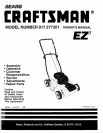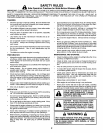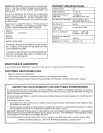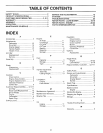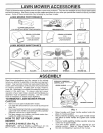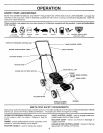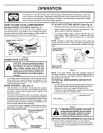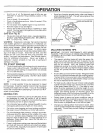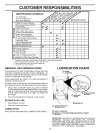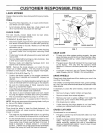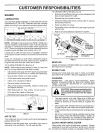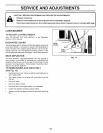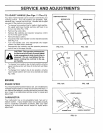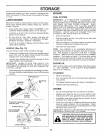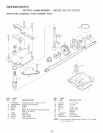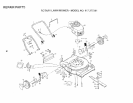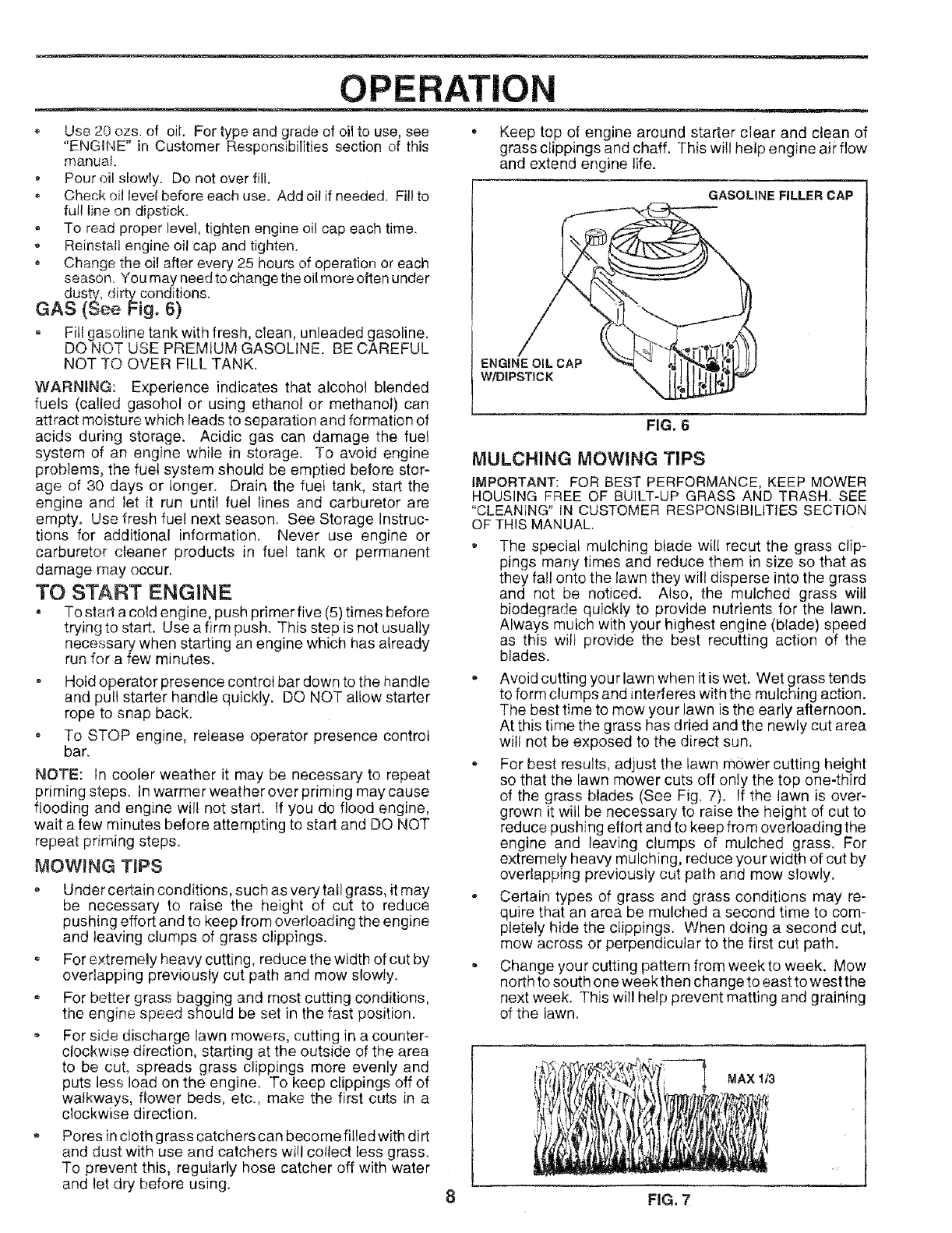
OP
• Use 20 ozs. of oil. For type and grade of oil to use, see
"ENG{NE" in Customer Responsibilities section of this
manuaI.
• Pour oil slowly. Do not over fill.
Check oil level before each use. Add oil if needed. Fill to
full line on dipstick.
= To read proper level, tighten engine oil cap each time.
Reinstall engine oil cap and tighten.
= Change the oil after every 25 hours of operation or each
season You may need to change the oil more often under
dusty, dirty conditions.
GAS (See Fig. 6)
o Fill gasoline tank with fresh, clean, unleaded gasoline.
DO NOT USE PREMIUM GASOLINE. BE CAREFUL
NOT TO OVER FILL TANK,
WARNING: Experience indicates that alcohol blended
fuels (called gasohol or using ethanol or methanol) can
attract moisture which leads to separation and formation of
acids during storage. Acidic gas can damage the fuel
system of an engine while in storage. To avoid engine
problems, the fuel system should be emptied before stor-
age of 30 days or longer. Drain the fuet tank, start the
engine and let it run until fuel lines and carburetor are
empty. Use fresh fuel next season. See Storage Instruc-
tions for additional information. Never use engine or
carburetor cleaner products in fuel tank or permanent
damage may occur.
TO START ENGINE
• To start a cold engine, push primer five (5) times before
trying to start. Use a firm push. This step is not usually
necessary when starting an engine which has already
run for a few minutes.
o Hold operator presence control bar down to the handle
and pull starter handle quickly. DO NOT allow starter
rope to snap back.
- To STOP engine, release operator presence control
bar.
NOTE: In cooler weather it may be necessary to repeat
priming steps. In warmer weather over priming may cause
flooding and engine will not start, if you do flood engine,
wait a few minutes before attempting to start and DO NOT
repeat priming steps.
MOWING TiPS
- Under certain conditions, such as very tall grass, it may
be necessary to raise the height of cut to reduce
pushing effort and to keep from overloading the engine
and leaving clumps of grass clippings.
o For extremely heavy cutting, reduce thewidth of cut by
overlapping previously cut path and mow slowly.
For better grass bagging and most cutting conditions,
the engine speed should be set in the fast position.
o For side discharge lawn mowers, cutting in a counter-
clockwise direction, starting at the outside of the area
to be cut, spreads grass clippings more evenly and
puts less load on the engine. To keep clippings off of
walkways, flower beds, etc., make the first cuts in a
clockwise direction.
Pores in cloth grass catchers can become filled with dirt
and dust with use and catchers will collect less grass.
To prevent this, regularly hose catcher off with water
and let dry before using.
Keep top of engine around starter clear and clean of
grass clippings and chaff. This will help engine air flow
and extend engine life.
GASOLINE FILLER CAP
/
ENGINE OiL CAP
W/DIPSTICK
FIG, 6
MULCHING MOWING TIPS
IMPORTANT: FOR BEST PERFORMANCE, KEEP MOWER
HOUSING FREE OF BUILT-UP GRASS AND TRASH. SEE
"CLEANING" JNCUSTOMER RESPONSIBILITIES SECTION
OF THIS MANUAL.
• The special mulching blade will recut the grass clip-
pings many times and reduce them in size so that as
they fall onto the lawn they will disperse into the grass
and not be noticed. Also, the mulched grass will
biodegrade quickly to provide nutrients for the lawn.
Always mulch with your highest engine (blade) speed
as this wilt provide the best recutting action of the
blades.
* Avoid cutting you r lawn when it is wet. Wet grass tends
to form clumps and interferes with the mulching action.
The best time to mow your lawn is the early afternoon.
At this time the grass has dried and the newly cut area
will not be exposed to the direct sun.
For best results, adjust the lawn mower cutting height
so that the lawn mower cuts off only the top one-third
of the grass blades (See Fig. 7). tf the lawn is over-
grown it will be necessary to raise the height of cut to
reduce pushing effort and to keep from overloading the
engine and leaving clumps of mulched grass. For
extremely heavy mulching, reduce your width of cut by
overlapping previously cut path and mow slowly.
- Certain types of grass and grass conditions may re-
quire that an area be mulched a second time to com-
pletely hide the clippings. When doing a second cut,
mow across or perpendicular to the first cut path.
= Change your cutting pattern from week to week. Mow
north to south one weekthen change to east to west the
next week. This will help prevent matting and graining
of the lawn.
MAX 1/3
8 FIG. 7



